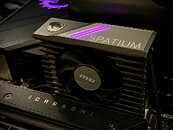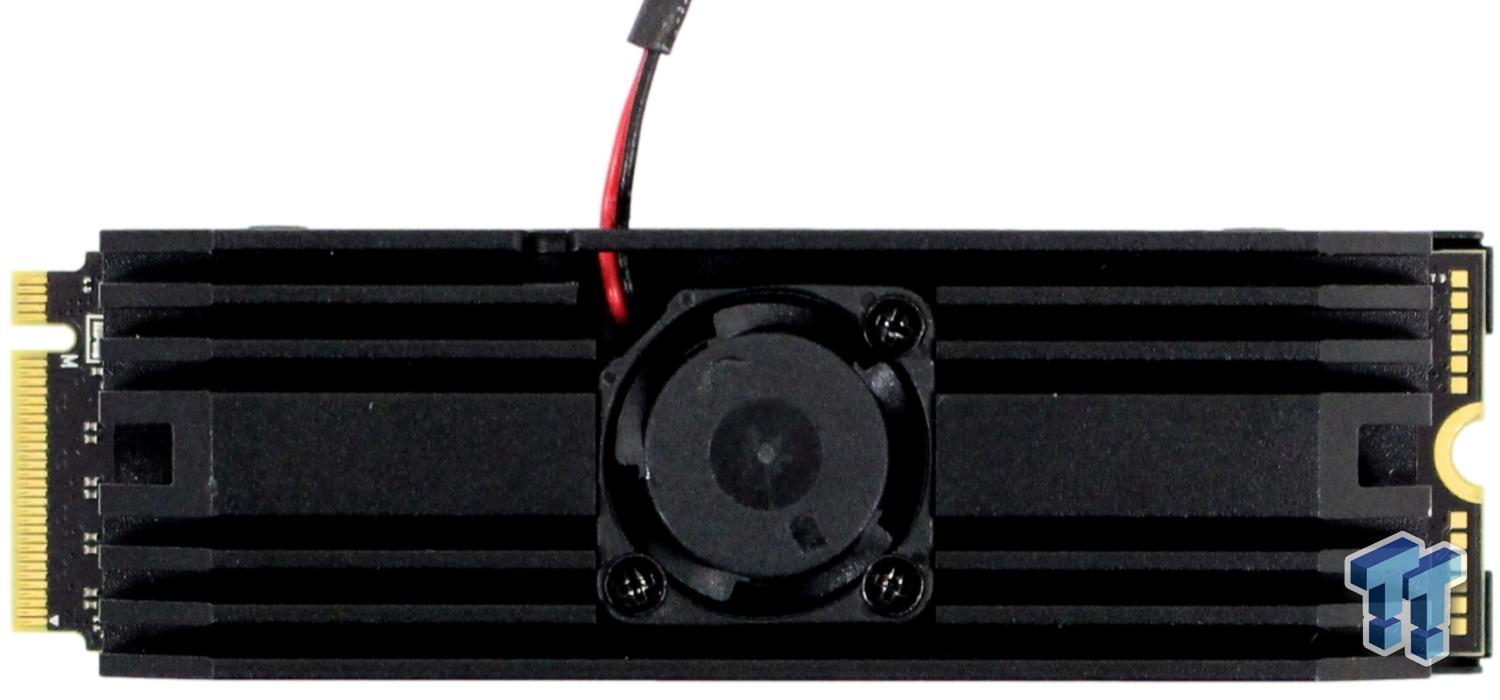- Joined
- Oct 9, 2007
- Messages
- 47,895 (7.37/day)
- Location
- Dublin, Ireland
| System Name | RBMK-1000 |
|---|---|
| Processor | AMD Ryzen 7 5700G |
| Motherboard | Gigabyte B550 AORUS Elite V2 |
| Cooling | DeepCool Gammax L240 V2 |
| Memory | 2x 16GB DDR4-3200 |
| Video Card(s) | Galax RTX 4070 Ti EX |
| Storage | Samsung 990 1TB |
| Display(s) | BenQ 1440p 60 Hz 27-inch |
| Case | Corsair Carbide 100R |
| Audio Device(s) | ASUS SupremeFX S1220A |
| Power Supply | Cooler Master MWE Gold 650W |
| Mouse | ASUS ROG Strix Impact |
| Keyboard | Gamdias Hermes E2 |
| Software | Windows 11 Pro |
MSI, the world's leading gaming PC hardware brand, is proud to announce the new SPATIUM M570 PRO Series, featuring the revolutionary PHISON E26 PCIe Gen 5 SSD controller and state-of-the-art 3D NAND flash. Designed to push the limits of storage performance, the SPATIUM M570 PRO Series SSD delivers an astonishing top read speed of 14 GB/s, breaking the world record and setting new industry standards.
The strong collaboration and cooperation between MSI and PHISON have made this record possible as both companies share in the excitement of pushing the envelope. "K.S.Pua, CEO of Phison Electronics, said that the cooperation between Phison and MSI started from the SSD product line. Since both companies have their own expertise in NAND controller and computer system integration respectively, and in addition to SSD, MSI has also actively expanded its strategy in the fields of gaming, content creators, commercial, industrial, robotics, and even automotive in recent years, where the application markets are in line with Phison's long-term strategy, so the two companies hit it off. The SPATIUM M570 Pro Series SSD announced by MSI this time adopted Phison's E26 SSD controller. Since the performance of PCIe 5.0 is much faster than the previous generation of PCIe 4.0, the two companies have conducted a lot of tests and discussions on power consumption and heat dissipation, which is a valuable cooperation experience. In the future, Phison will continue to support MSI through controller technology."


With the same "gamers first" attitude that made MSI products great, MSI continues redefining the boundaries of storage capabilities with unprecedented performance for the MSI SPATIUM M570 PRO Series SSD. Using the Lightning Gen 5 M.2 slot on the MSI MPG X670E CARBON WIFI motherboard, the performance is exceptional for the MSI SPATIUM M570 PRO Series SSD, powered by PHISON's PS5026-E26 controller. Our testing shows that the SPATIUM M570 PRO Series SSD can reach over 14 GB/s sequential read speeds and up to 12 GB/s write speeds, demonstrating that MSI continues to be a top provider of ultimate performance products, and allowing gamers to gain valuable milliseconds on latency or professionals to process ever bigger files even faster.
View at TechPowerUp Main Site
The strong collaboration and cooperation between MSI and PHISON have made this record possible as both companies share in the excitement of pushing the envelope. "K.S.Pua, CEO of Phison Electronics, said that the cooperation between Phison and MSI started from the SSD product line. Since both companies have their own expertise in NAND controller and computer system integration respectively, and in addition to SSD, MSI has also actively expanded its strategy in the fields of gaming, content creators, commercial, industrial, robotics, and even automotive in recent years, where the application markets are in line with Phison's long-term strategy, so the two companies hit it off. The SPATIUM M570 Pro Series SSD announced by MSI this time adopted Phison's E26 SSD controller. Since the performance of PCIe 5.0 is much faster than the previous generation of PCIe 4.0, the two companies have conducted a lot of tests and discussions on power consumption and heat dissipation, which is a valuable cooperation experience. In the future, Phison will continue to support MSI through controller technology."


With the same "gamers first" attitude that made MSI products great, MSI continues redefining the boundaries of storage capabilities with unprecedented performance for the MSI SPATIUM M570 PRO Series SSD. Using the Lightning Gen 5 M.2 slot on the MSI MPG X670E CARBON WIFI motherboard, the performance is exceptional for the MSI SPATIUM M570 PRO Series SSD, powered by PHISON's PS5026-E26 controller. Our testing shows that the SPATIUM M570 PRO Series SSD can reach over 14 GB/s sequential read speeds and up to 12 GB/s write speeds, demonstrating that MSI continues to be a top provider of ultimate performance products, and allowing gamers to gain valuable milliseconds on latency or professionals to process ever bigger files even faster.
View at TechPowerUp Main Site





